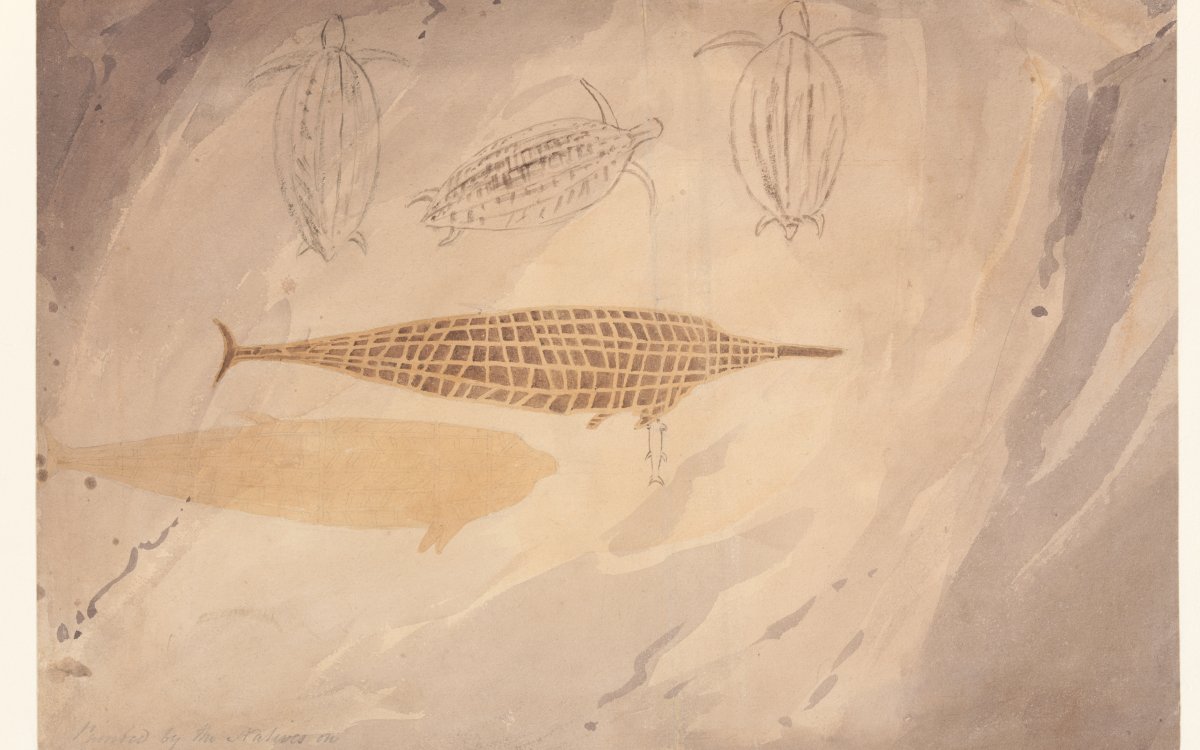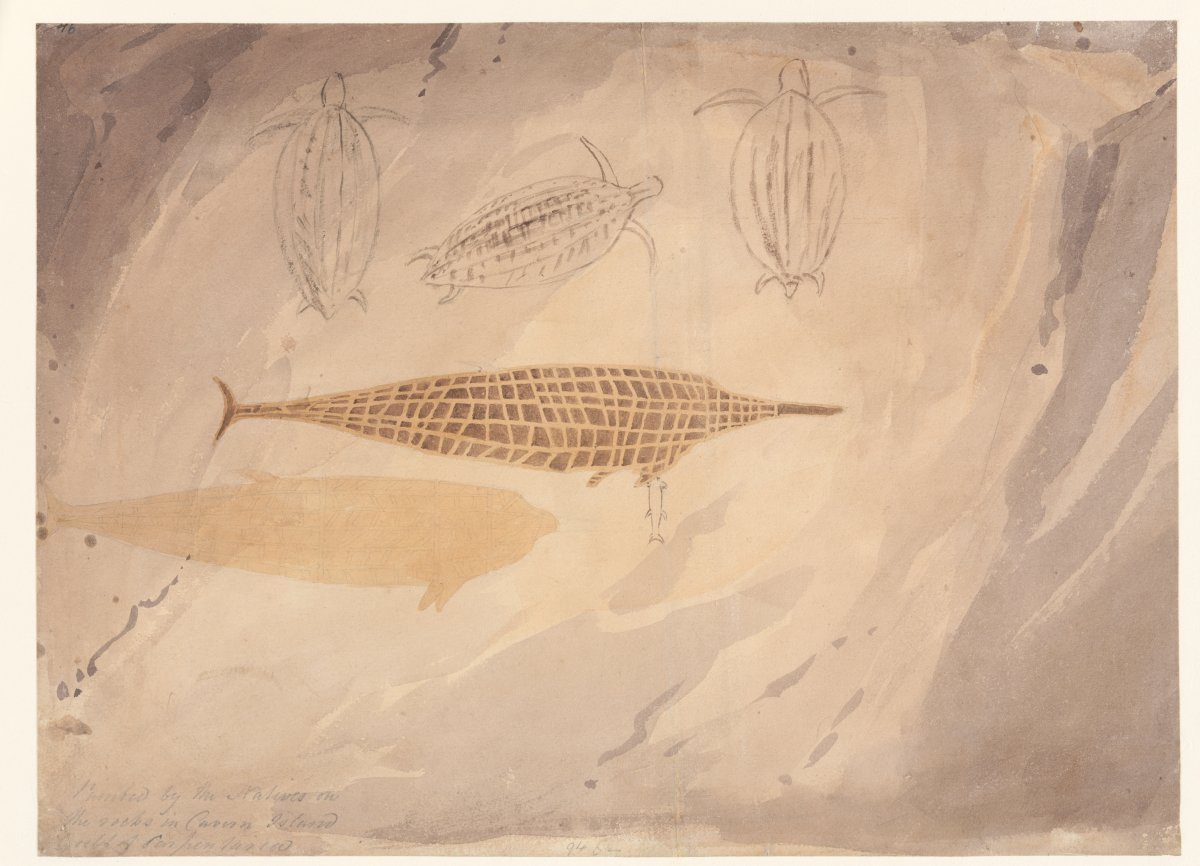William Westall’s watercolour painting represents one of the first encounters with Indigenous art by a European explorer. In 1801, Westall was a 19-year-old probationary student at London’s Royal Academy of Arts when he was selected by Joseph Banks to be the landscape and figure painter on Matthew Flinders’ Investigator expedition to Australia—then known as New Holland. Westall was interested in Aboriginal culture and, during his visit to Chasm Island, in the Gulf of Carpentaria, he made two remarkable watercolours, the first European depictions of Indigenous rock art. This one shows turtles and possibly dolphins.

Westall, William, 1781-1850. (1803). Chasm Island, native cave painting, 1803 : [picture] / [William Westall]. http://nla.gov.au/nla.obj-138890494
1. Display this painting for your students. As a class, discuss the following (using the background information as a guide):
- This is a painting of some paintings. Why do you think the young British artist, William Westall, decided to paint this site when he came across it in 1803? Where, when, why and by whom do you think the paintings in the original picture were created?
- William Westall’s painting shows a special place. Who might the place be special for? Why might it be special to them?
- What makes places special to people? Can you think of some different types of special places? What are some ways people show that a place is special (e.g. painting it, naming it, visiting it, protecting it)? Are there places that are special to you?
Ask students to create a picture of a special place they are familiar with.
2. Explain to your students that different groups of Aboriginal and Torres Strait Islander people have connections to different areas and places in Australia. As a class, identify:
- the traditional owners and/or language group/s in the area where your school is located
- any landmarks or special places in your area that have significance for the traditional owners
- place names (e.g. parks, streets, suburbs) in your area that indicate an Indigenous heritage.
Invite a representative of the local Indigenous community to visit your classroom to talk to the students about the traditional owners’ connections to the area.
